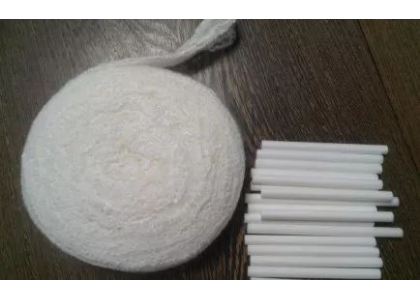
With the smokers' requirements for healthy and safe smoking and the development of the tobacco industry, more and more attention has been paid to the development of tobacco filter materials. As an indispensable part of modern cigarettes, filter cigarettes have been greatly developed and used.
Initially, the filter materials in filter cigarettes were composed of paper, non-woven fabrics, fibers and other materials. After decades of development and application, the currently widely used cigarette filter materials are mainly cellulose diacetate tow and polypropylene fiber tow.
Cellulose diacetate tow for cigarettes, also known as acetate tow. Diacetate fiber is obtained from natural wood pulp (taken from North American Sequoia in the early days, which is fast-growing, high-yield, good processability, rich in lignin, and long in wood fiber) through esterification (acetylation) Plain tablets are processed by processes such as dissolution, impurity filtration, spinning (spinning), crimping, and drying. Acetate fiber has the characteristics of adsorption, weather resistance, oil resistance and good processability. The extensive application and research in the textile, paint, medical and electronic industries have also developed rapidly.
Polypropylene tow for cigarettes is a non-toxic, odorless, high-performance, colorless and translucent thermoplastic synthetic resin tow. It has chemical resistance, heat resistance, electrical insulation, high-strength mechanical properties and good high wear-resistant processing performance, etc. Polypropylene fiber filter rod is made of polypropylene tow (featuring low density, high mechanical strength, high elongation, low moisture regain, chemical stability, etc.) and special adhesive (to stabilize the structure, reduce fiber gaps and increase filtration The role of hardness after rod molding) is made by drying and molding. Its cost is low, but its inertness makes the effect of coke reduction and harm reduction inferior to that of acetate fiber filter rods, and due to the high strength of polypropylene tow fibers, the qualified rate of filter rods after processing is low (prone to shrinkage and The fiber is difficult to cut), and the hardness of the filter rod is low. Because the filter material has a great influence on the aroma and taste of cigarettes, unstable draw resistance, poor degradability and does not meet environmental protection requirements, polypropylene fiber filter rods are gradually withdrawing from the Chinese market.
The filter rods made of acetate fiber tow and propylene fiber bundle rely on the fiber gap to intercept the particulate matter in the flue gas (the gas phase "aroma" can pass through smoothly), block and diffuse, and precipitate to achieve Adsorption efficiency, thereby effectively reducing the content of harmful components in the flue gas. While ensuring the satisfaction of smokers during the smoking process, reducing the discomfort after smoking is the contribution of the tobacco industry to reduce the tar and harm of cigarette products year by year.